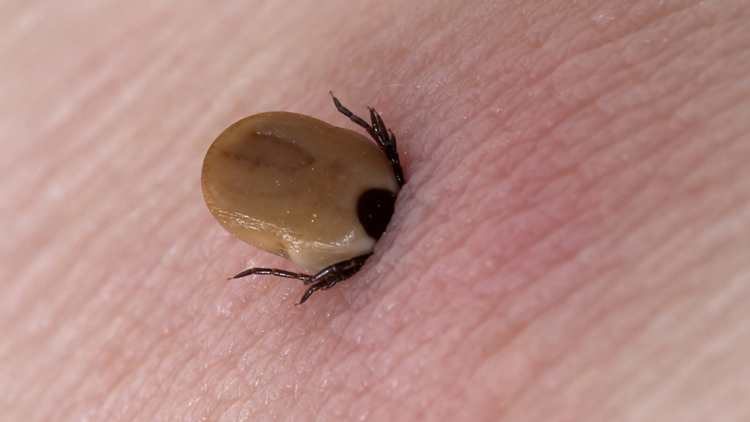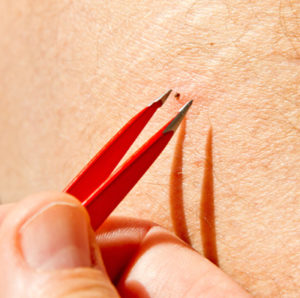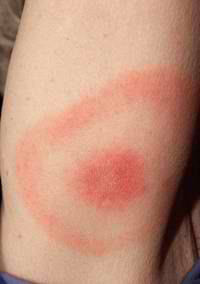So, you found a tick. It’s embedded in your flesh. What do you do now?
This is an all-too-common scenario in Central Massachusetts. Growing tick populations see us trying to avoid ticks every trip outdoors, even in our own backyards. The good news is, there are many ways to protect ourselves from ticks. Personal tick repellent and protective clothing are recommended when hiking, camping, or going to the beach. Professional at-home tick control will keep you safer at home. Even so, our efforts can never achieve 100% protection against ticks. Here is what to do if you find a tick on you or a family member.

Remove the tick.

Contrary to popular belief, heating the tick or slathering it in peppermint oil are not proper methods of tick removal. All that is required for tick removal is a pair of tweezers. According to the CDC, fine-tipped tweezers should be used to grasp the tick as close to your skin as possible. Pull up with even pressure, and do not twist the tweezers. Choose your method of disposal, but do not crush the tick with your fingers. Wrap it tightly in tape, soak it in alcohol, or flush it. Be sure to clean the bite area thoroughly with alcohol and follow up with warm soap and water.
Should you keep the tick to have it tested?
While you can save the tick to have it tested for disease, the CDC also does not recommend it as a standard practice. Stating that lab tests are often erroneous, and might not be helpful in determining your risk for disease, they recommend disposal instead.
What should you do after the tick is removed and disposed of?

Watch for symptoms of illness for the next 30 days. For Lyme disease, this could be the telltale bull’s eye rash, but many cases of Lyme do not present with the rash. You should also watch for other symptoms, such as extreme fatigue, body aches, fever, and joint pain. Seek medical help at the first sign of any symptom you believe might be related to your tick bite.
You must be bitten by a tick to become infected with Lyme disease or other tick-borne illnesses. If you find a tick crawling on your skin, you are not susceptible to infection. If you do find a tick embedded in your skin, know that most times, unless a tick has been attached for at least 36 hours, you likely will not get Lyme disease. Be vigilant anyway.
Do you need an antibiotic after a tick bite?
The CDC also does not recommend antibiotic treatment for everyone after a tick bite. Speak with your physician. Your doctor might recommend a dose of doxycycline as a preventive measure.
Also read: Is DEET better than picaridin for hiking?
Even though we are coming to the end of high “tick season” there are steps you can take to make your yard safer all year long and next spring. Call your Central Mass tick control professional to ask about tick tubes for ultimate tick protection for your family.
5 thoughts on “What to Do if You Find a Tick on You”
Comments are closed.